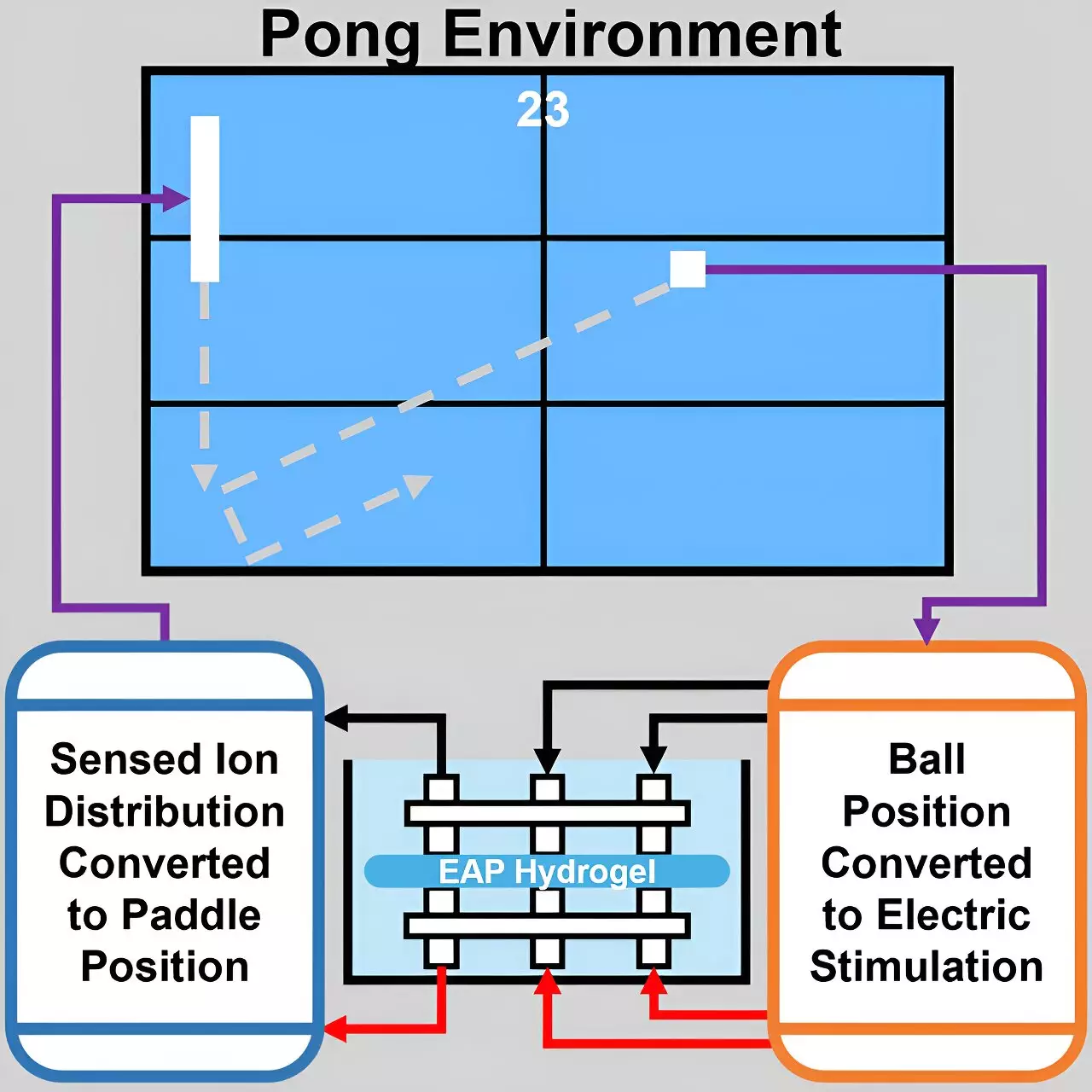A groundbreaking study led by Dr. Yoshikatsu Hayashi at the University of Reading unveils a fascinating intersection between materials science and cognitive behavior. Published in Cell Reports Physical Science, this research demonstrates how a simple hydrogel—a soft, flexible material—can learn and enhance its performance in the classic video game “Pong.” This finding not only challenges traditional notions of intelligence and learning but also broadens the horizons for the development of adaptable materials that mimic biological systems.
The hydrogel’s interaction with a computer simulation illustrates a remarkable capability for improvement over time, suggesting that even the most basic materials could produce complex behavior characteristics typically seen in living organisms or advanced artificial intelligence (AI). The implications of this study could redefine our understanding of materials and their potential applications in various fields.
At the core of the researchers’ discovery lies the movement of charged particles within the hydrogel, which responds to electrical stimulation. This ion migration is what allows the hydrogel to create a form of ‘memory’ akin to that seen in neural networks. First author Vincent Strong, a robotics engineer, notes that “ionic hydrogels can achieve the same kind of memory mechanics,” highlighting that the material not only engages with the game but actively improves its performance—akin to learning.
Dr. Hayashi elaborated on this by comparing the memory functions of hydrogels to those of neurons. In neurons, ions migrate within the cellular structure, while in hydrogels, these ions traverse outside, demonstrating that memory mechanisms can operate across different material compositions. This opens avenues for alternative computing paradigms that move away from conventional neural networks, suggesting a new kind of intelligence embedded in materials.
The drive for this innovative research was inspired by prior studies that revealed brain cells could learn to play “Pong” when appropriately stimulated. Dr. Hayashi’s work further probes the essence of cognitive processes within artificial systems, examining whether basic components can replicate the feedback loops vital for learning in biological organisms. His assertion that “the principles in both neurons and hydrogels are fundamentally similar” emphasizes the potential for applying these insights to create simpler, yet effective, algorithms.
Moreover, the implications of this research extend beyond game-playing hydrogels; they also offer a glimpse into future technologies that exploit the inherent ‘intelligence’ of materials for more complex tasks—potentially transforming industries reliant on adaptive systems.
The research team is set on expanding their exploration of hydrogel memory. With plans to probe its mechanisms further, they aim to determine how these materials can tackle additional tasks. This commitment to innovation was evidenced by a related study where a different hydrogel was taught to synchronize with an external pacemaker rhythmically.
The capacity for chemical oscillations in the hydrogel mirrors cardiac muscle behavior, presenting significant implications for both materials science and medical research. By emulating heart muscle cells, this research lays the groundwork for potential replacements for animal models in cardiac research, thereby addressing ethical concerns while paving the way for revolutionary advancements in understanding and treating conditions like arrhythmia.
As the field continues to evolve, the significance of hydrogels in bridging various scientific domains—neuroscience, physics, materials science, and cardiac research—cannot be overstated. The insights gained from these studies suggest that the foundational principles of learning and adaptation inherent in living systems likely transcend the boundaries of biology.
Moving forward, the researchers aim to refine and develop more complex behaviors within hydrogels. This could lead to real-world applications that manifest in innovative medical devices, soft robotics, and adaptive materials capable of responding to dynamic environmental stimuli.
The exploration of hydrogels not only redefines how we perceive intelligence and learning within materials but also opens up exciting possibilities for future technologies. As we continue to unravel the potential of these adaptive materials, we anticipate a paradigm shift in how we approach both scientific research and practical applications in technology. The journey into understanding these remarkable materials has just begun, and the possibilities appear limitless.

